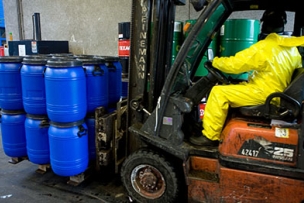In business for over 80 years AccuformNMC is the leading manufacturer of American made safety communication products—including over 16,000 safety signs, tags, and labels. Our commitment is to support every safety ID need, with the best product, service and custom solutions in the industry. We offer the toughest signs and labels in the market, and guarantee them for life. Protected with Sign Muscle®, a clear liquid over-laminate strong enough to protect against fading under direct sunlight, it allows easy graffiti removal, resists chemical corrosion and is applied for free.
A careful and organized approach to lockout/tagout is critically important. Lockout/tagout procedures protect the lives and well-being of workers; failure to build an effective lockout/tagout program can result in serious injury or death.
And yet, despite the critical nature of lockout/tagout and the staggering human cost of making lockout/tagout mistakes (as well as monetary costs by way of punitive fines), it continues to be found in OSHA’s top 10 most-cited violations list every year. Given this information, it can be concluded that lockout/tagout non-compliance is a serious, widespread, current, and relevant problem. As such, the problem and potential solutions to the problem warrant a very close look. This article aims to discuss ways for companies to comply with lockout/tagout regulations in the safest, easiest, and most efficient manner possible. It will also cover a number of products that will help businesses create an organized and streamlined lockout/tagout program, including lockout stations, tag centers, group lockout boxes, and lockout information cabinets.

.png?itok=k2IwFSM2)






Talk to Us!
Leave a reply
Your email address will not be published. Required fields are marked *